Input interpretation

cyclopentane
Chemical names and formulas

formula | C_5H_10 name | cyclopentane alternate names | cyclopentanes | hydrocarbons, cyclic c5 and c6 | pentamethylene mass fractions | C (carbon) 85.6% | H (hydrogen) 14.4%
Lewis structure
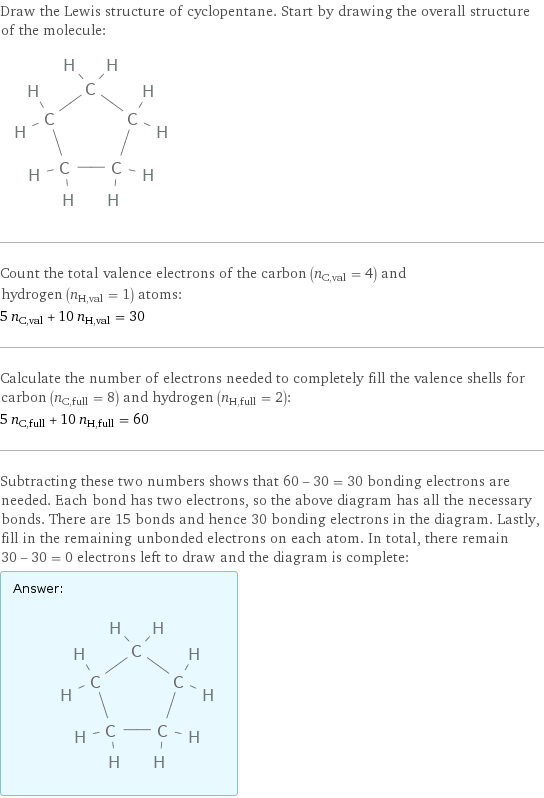
Draw the Lewis structure of cyclopentane. Start by drawing the overall structure of the molecule: Count the total valence electrons of the carbon (n_C, val = 4) and hydrogen (n_H, val = 1) atoms: 5 n_C, val + 10 n_H, val = 30 Calculate the number of electrons needed to completely fill the valence shells for carbon (n_C, full = 8) and hydrogen (n_H, full = 2): 5 n_C, full + 10 n_H, full = 60 Subtracting these two numbers shows that 60 - 30 = 30 bonding electrons are needed. Each bond has two electrons, so the above diagram has all the necessary bonds. There are 15 bonds and hence 30 bonding electrons in the diagram. Lastly, fill in the remaining unbonded electrons on each atom. In total, there remain 30 - 30 = 0 electrons left to draw and the diagram is complete: Answer: | |
3D structure
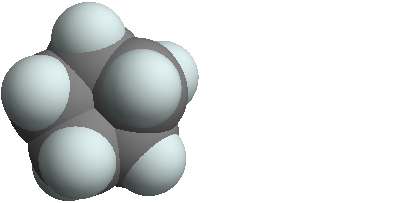
3D structure
Basic properties

molar mass | 70.14 g/mol phase | liquid (at STP) melting point | -94 °C boiling point | 50 °C density | 0.751 g/cm^3 solubility in water | insoluble
Units

Liquid properties (at STP)
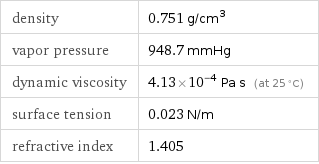
density | 0.751 g/cm^3 vapor pressure | 948.7 mmHg dynamic viscosity | 4.13×10^-4 Pa s (at 25 °C) surface tension | 0.023 N/m refractive index | 1.405
Units

Thermodynamic properties
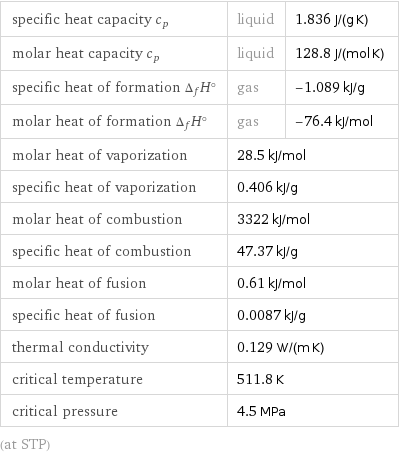
specific heat capacity c_p | liquid | 1.836 J/(g K) molar heat capacity c_p | liquid | 128.8 J/(mol K) specific heat of formation Δ_fH° | gas | -1.089 kJ/g molar heat of formation Δ_fH° | gas | -76.4 kJ/mol molar heat of vaporization | 28.5 kJ/mol | specific heat of vaporization | 0.406 kJ/g | molar heat of combustion | 3322 kJ/mol | specific heat of combustion | 47.37 kJ/g | molar heat of fusion | 0.61 kJ/mol | specific heat of fusion | 0.0087 kJ/g | thermal conductivity | 0.129 W/(m K) | critical temperature | 511.8 K | critical pressure | 4.5 MPa | (at STP)
Chemical identifiers
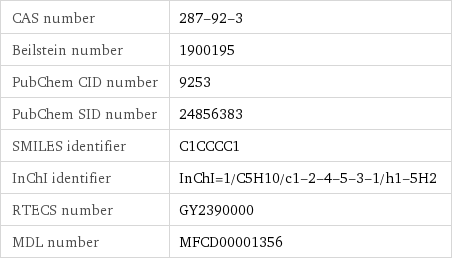
CAS number | 287-92-3 Beilstein number | 1900195 PubChem CID number | 9253 PubChem SID number | 24856383 SMILES identifier | C1CCCC1 InChI identifier | InChI=1/C5H10/c1-2-4-5-3-1/h1-5H2 RTECS number | GY2390000 MDL number | MFCD00001356
NFPA label

NFPA label
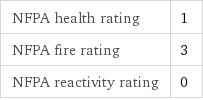
NFPA health rating | 1 NFPA fire rating | 3 NFPA reactivity rating | 0
Safety properties
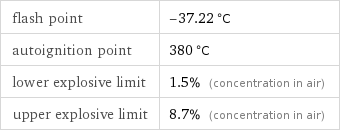
flash point | -37.22 °C autoignition point | 380 °C lower explosive limit | 1.5% (concentration in air) upper explosive limit | 8.7% (concentration in air)

DOT hazard class | 3 DOT numbers | 1146
Toxicity properties

threshold limit value | 600 ppmv

RTECS classes | other